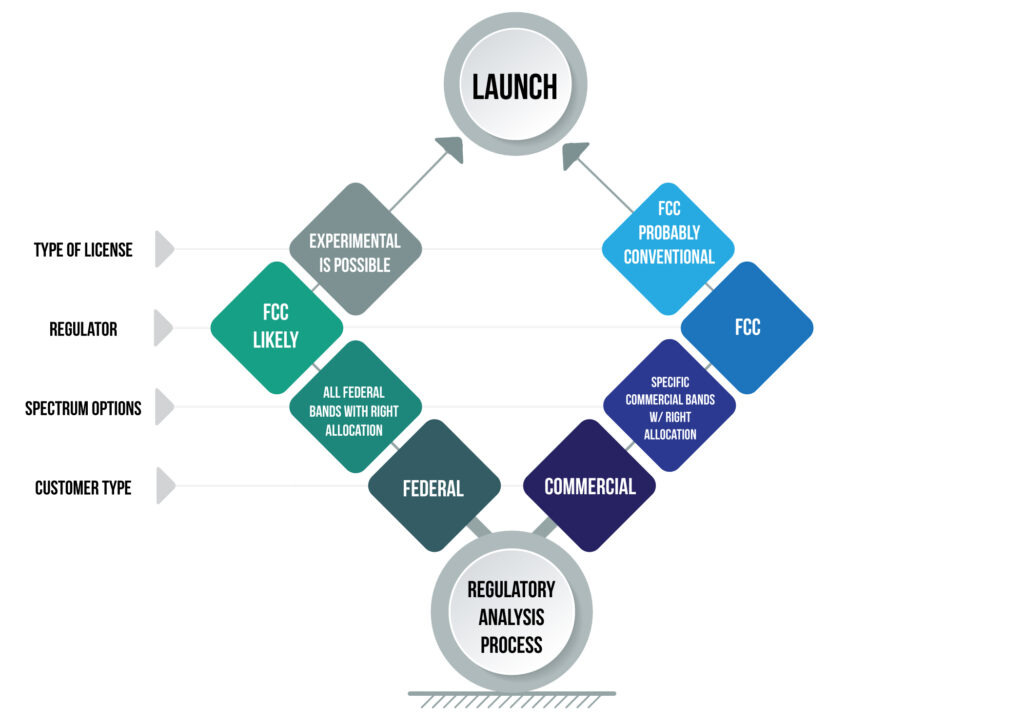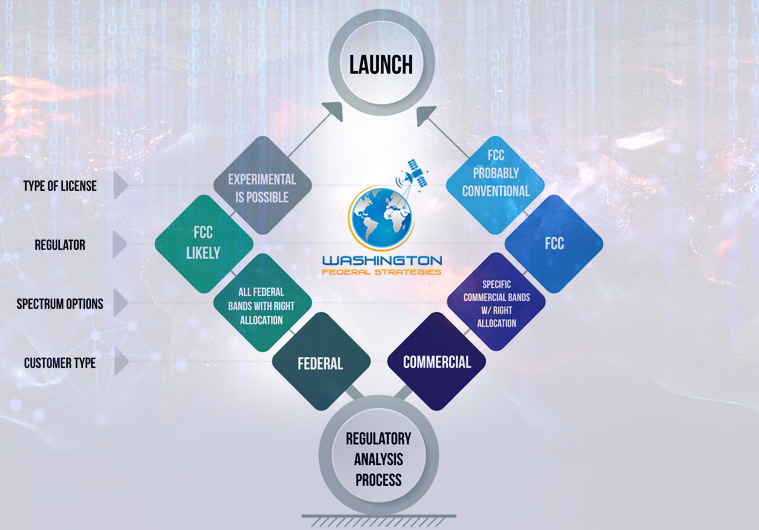Navigating spectrum management and regulatory compliance is essential but complex, especially when designing technologies intended for space or other high-stakes environments. The regulatory journey varies depending on your target market—whether for commercial use, government use, or dual applications. Each path involves unique requirements and approvals to ensure that your technology functions reliably, safely, and legally within its spectrum band.
The process begins with a regulatory analysis that follows one of two primary tracks: federal or commercial. If your technology is designed for government use, the federal track involves coordinating closely with agencies such as the Federal Communications Commission (FCC) or the National Telecommunications and Information Administration (NTIA) in the United States, or similar authorities worldwide. For commercial technologies, a different regulatory pathway may be pursued, typically involving the FCC and additional local or regional regulators, depending on where your technology will be deployed. Dual-use technologies that serve both government and commercial clients require a hybrid approach, often engaging multiple agencies to cover all regulatory bases.
A critical part of the regulatory analysis involves determining the appropriate spectrum band for your technology. Spectrum bands represent distinct ranges of radio frequencies allocated for specific uses, and selecting the correct one is essential for meeting technical and regulatory requirements. Available bands can vary based on factors like intended function, potential interference, and global spectrum allocation agreements. Aligning with the correct band ensures your technology can operate effectively without disrupting other services.
In addition to the spectrum band, the type of license is another important consideration. There are generally two primary license types: experimental and conventional. Experimental licenses are often used for research, testing, and development, allowing flexibility in frequency use to test new applications. Conventional licenses are more rigid but ensure that an operational technology meets all regulatory standards and is approved for general use.
Choosing the correct licensing track and managing agency interactions requires a solid understanding of the regulatory landscape. By navigating these steps with precision, your technology is poised to move through approval smoothly, setting you up for successful deployment and launch. Working with regulatory experts who have decades of experience navigating the complex system, like our team here at Washington Federal Strategies, your process is streamlined, helping you stay on schedule and within budget, ultimately driving your innovation forward.


